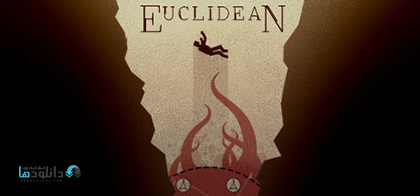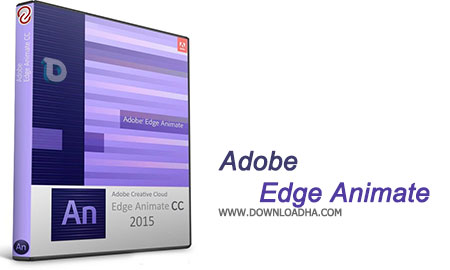- بازی کنسول
- بازی کامپیوتر
- بازی اکشن
- بازی استراژی
- بازی فکری
- بازیxbox
- تلفن همراه
- بازی اندروید
- نرم افزار موبایل
- ios
- نرم افزار
- نرم افزار ویندوز
- نرم افزار کاربردی
- نرم افزار پر کار برد
- دانلود فیلم وعکس
- دانلود فیلم
- دانلود عکس
- اطلاعات عمومی
- اطلاعات عمومی
- لطیفه
- دانلود موزیک
- دانلود موزیک بی کلام و باکلام
- دانلودموزیک ماه محرم
- انیمشین
- انیمیشن و کارتون
- مستند
- مستند های جالب
- دانلود اخبار
- دانلود اخبار به صورت پی دی اف
- بازی های فوق فشرده
- بازی های فوق فشرده برایpc
- دانلود نوحه
- دانلود نوحه محرم
- مقاله
- مقاله
- انیمیشن آموزشی ریاضی ششم
- دانلوده اهنگ های جدید سال 93
- فیلم های با حال
- بازی انلاین پرتاب کفش
- دانلود بازی Pro Cycling Manager 2014 برای PC
- دانلود موسیقی های متن بازی Tomas Dvorak – Machinarium 2009
- دانلود Adobe Reader XI v11.0.8 – نرم افزار مشاهده فایل های PDF
- دانلود کلیپ دوربین مخفی سرکاری مرد 1000 چهره
- دانلود قالب لوکس بلاگ بلاگفا و ...
- دانلود مستند سفر به بهشت کوسه ها Journey To Shark Eden 2010
- دانلود مجموعه شعبده بازی Criss Angel Believe 2013
- بهینه سازی ویژه ویندوز ۷ با Windows 7 Manager 5.0.6
- نرم افزار مدیریت دیتابیس ها PostgreSQL 9.4.1-1
- دانلود برنامه Voice Recorder Pro – ویندوز فون
- دانلود نرم افزار جایگزین اکسپلورر ویندوز XYplorer v15.20.0300
- بره ناقلا – Shaun the Sheep Movie
- دانلود بازی ویتچر : عرصه نبرد The Witcher Battle Arena v1.1.0 اندروید – همراه دیتا + تریلر
- قفل گذاری روی درایوها، Odin HDD Encryption 7.7.7
- دانلود بلودیکت BlueDict 7.2.9 – بهترین و کاملترین دیکشنری انگلیسی به فارسی اندروید + دیتابیس
- دانلود بازی The Bluecoats: North vs South برای Pc
- دانلود AVG Internet Security 2015 Build 6037 x86/x64 – نرم افزار اینترنت سیکوریتی
- دانلود Kaspersky Internet Security 2015 15.0.2.361.8103 + Farsi – کاسپراسکای اینترنت سکیوریتی
- دانلود نرم افزار مرورگر وب SlimJet 5.0.4.0
History




In 1959, Walt Disney Productions began looking for land for a second park to supplement Disneyland, which opened in Anaheim, California, in 1955. Market surveys revealed that only 5% of Disneyland's visitors came from east of the Mississippi River, where 75% of the population of the United States lived. Additionally, Walt Disney disliked the businesses that had sprung up around Disneyland and wanted control of a much larger area of land for the new project.[1]
Walt Disney flew over the Orlando-area site (one of many) in November 1963. Seeing the well-developed network of roads, including the planned Interstate 4 and Florida's Turnpike, with McCoy Air Force Base (later Orlando International Airport) to the east, Disney selected a centrally located site near Bay Lake.[2]
To avoid a burst of land speculation, Disney used various dummy corporations to acquire 27,443 acres (11,106 ha) of land.[2] In May 1965, some of these major land transactions were recorded a few miles southwest of Orlando in Osceola County. Also, two large tracts totaling $1.5 million were sold, and smaller tracts of flatlands and cattle pastures were purchased by exotic-sounding companies such as the Latin-American Development and Management Corporation and the Reedy Creek Ranch Corporation (some of these names are now memorialized on a window above Main Street, U.S.A. in the Magic Kingdom). In addition to three huge parcels of land were many smaller parcels, referred to as "outs".
Much of the land acquired had been platted into 5-acre (2 ha) lots in 1912 by the Munger Land Company and sold to investors. Most owners were happy to get rid of the land, which was mostly swamp. Another issue was the mineral rights to the land, which were owned by Tufts University. Without the transfer of these rights, Tufts could come in at any time and demand the removal of buildings to obtain minerals. Eventually, Disney's team negotiated a deal with Tufts to buy the mineral rights for $15,000.[3]
Working under a strict cloak of secrecy, real estate agents who didn't know the identity of their client began making offers to landowners in southwest Orange and northwest Osceola counties in April 1964 - shortly after Walt Disney chose the site for his new theme park.
Careful not to let property owners know the extent of their land-buying appetites, the agents quietly negotiated one deal after another - sometimes lining up contracts to buy huge tracts for little more than $100 an acre.[4]
Because they knew that recording the first deeds would trigger an intense wave of public questioning about what was going on, Disney's representatives waited until they had a large number of parcels locked up through options before filing their paperwork.
Meanwhile, a rumor had popped up in California that Disney had his eye on Orlando. On May 20, an Orlando Sentinel article acknowledged the persistent rumor that "the land is being purchased for a second East Coast Disneyland attraction. But the paper discounted the gossip because Walt Disney himself had specifically denied it when interviewed during a visit to Cape Kennedy. Disney baldly lied in telling the newspaper he was spending $50 million to expand Disneyland in California and was not interested in another such venture at that time.
According to author Ormund Powers' account in his book Martin Andersen: Editor, Publisher, Galley Boy , Walt Disney Productions attorney Paul Helliwell paid a visit to Orlando banker Billy Dial, who was involved in the negotiations, and said, "There's been a leak. If that leak gets publicized, it's going to kill Orlando's chances.
"Let's go see [Orlando Sentinel Publisher] Martin Andersen, Dial replied.
"That's the last man we want to see, Helliwell said.
"That's the first man we want to see, Dial told him.
Powers wrote that Dial and Helliwell visited Andersen at the newspaper. The newspaper publisher "called in his top people and said,`There is a big deal going on and while we don't know what it is, we have assurances it will be good for the community, and we don't want a line printed in this paper about it.' "
Former Sentinel editor Danny Hinson told Powers for his book, Martin Andersen: Editor, Publisher, Galley Boy, that Andersen knew practically everything that went on in the Orlando area, and he thought Andersen was "more or less in on the Disney secret.
The late Sentinel columnist Charlie Wadsworth said much later that "Andersen was such a good newsman that it would have been inconceivable [that] Disney could buy that quantity of real estate and Andersen not know about it, wrote Powers, who died in May.
Longtime Disney publicity director Charles Ridgway told Powers he had heard from Disney executive Cardon Walker that Andersen knew "well ahead that Disney was the buyer, "but he kept it a secret. He did not disclose it.
Still, years later, Andersen insisted that he did not learn the identity of the mystery purchaser until late October 1965.
The first purchases, recorded on May 3, 1965, included one for 8,380 acres of swamp and brush from state Sen. Irlo Bronson. The deal had been made seven months earlier. The first newspaper account of the large-scale interest in Orange and Osceola county property ran the next day. The May 4 Orlando Sentinel story said the transactions "will undoubtedly increase rumors already afloat for the past year to the effect that a new and large industrial complex is about to locate in this area. Indeed it did.
Because of the proximity to Cape Kennedy, much early speculation centered on space or aircraft technology, according to anthropologist Stephen M. Fjellman in his 1992 book Vinyl Leaves: Walt Disney World and America. Carmakers' names, especially Ford, also were mentioned. Speculation during the summer about the identity of the buyer included the Rockefellers, Howard Hughes and NASA's Manned Orbiting Laboratory Project.
One day while Hinson was putting out the Evening Star, Andersen's afternoon paper, he got a phone call from a friend who said he had been in the office of a New York public relations firm and had been told the firm was helping Disney plan a big development near Orlando.
"Hinson thought the `mystery industry' had been nailed down and rushed into the office of editorial director Red McGee, Powers wrote.
" `You are not to touch that story,' McGee told him. "The story died right there.
Within three weeks of recording the Bronson transaction, Florida Ranch Lands had wrapped up deals with 47 owners. Eventually, the firm negotiated agreements with 51 owners to buy some 27,400 acres for more than $5 million -- an average price of $182 per acre.
Disney wanted to announce his ownership of the land and his plans for Walt Disney World on Nov. 15, 1965. But the secret wouldn't keep that long.
In October 1965, Emily Bavar, editor of the Sentinel's Florida magazine, was in Anaheim for Disneyland's 10th anniversary celebration. During an interview with Walt Disney, Bavar asked whether he was buying up vast acreage in Central Florida.
"He looked like I had thrown a bucket of water in his face, Bavar later told Powers for his book. "I have never seen anyone look so stunned. He was too surprised, but then he recovered and said no.
But Disney's evasiveness, combined with other tidbits she picked up in Anaheim, convinced Bavar.
On Oct. 21, 1965, a story by Bavar, written in the first person and acknowledging that she was sticking her neck out, predicted Disney would build a new theme park on the huge tract. After piecing together more information from various sources, the paper led its Sunday edition three days later with a story headlined, "We Say: `Mystery Industry' Is Disney."
With the mouse out of the bag, Disney allowed Gov. Haydon Burns to confirm the next day, Oct. 25, that he intended to build "the greatest attraction in the history of Florida in Central Florida. Disney himself came to Orlando for the formal announcement with Burns on Nov. 15.[5]
Walt Disney explained the plans for the site, including EPCOT, the Experimental Prototype Community of Tomorrow, which was to be a futuristic planned city (and which was also known as Progress City). He envisioned a working city with commercial and residential areas that also continued to showcase and test new ideas and concepts for urban living.
Walt Disney died from lung cancer on December 15, 1966, before his vision was realized. His brother and business partner, Roy O. Disney, postponed his retirement to oversee construction of the resort's first phase.
On February 2, 1967, Roy O. Disney held a press conference at the Park Theatres in Winter Park, Florida. The role of EPCOT was emphasized in the film that was played, the last one recorded by Walt Disney before his death. After the film, it was explained that for Disney World, including EPCOT, to succeed, a special district would have to be formed: the Reedy Creek Improvement District with two cities inside it, Bay Lake and Reedy Creek (now Lake Buena Vista). In addition to the standard powers of an incorporated city, which include the issuance of tax-free bonds, the district would have immunity from any current or future county or state land-use laws. The only areas where the district had to submit to the county and state would be property taxes and elevator inspections.[1]
The legislation forming the district and the two cities was signed into law by Florida Governor Claude R. Kirk, Jr. on May 12, 1967. The Florida Supreme Court then ruled in 1968 that the district was allowed to issue tax-exempt bonds for public projects within the district despite the sole beneficiary being Walt Disney Productions.
The district soon began construction of drainage canals, and Disney built the first roads and Magic Kingdom. The Contemporary Resort Hotel, the Polynesian Village, and Fort Wilderness were also completed in time for the park's opening on October 1, 1971. The Palm and Magnolia golf courses near Magic Kingdom had opened a few weeks before. At the park's opening, Roy O. Disney dedicated the property and declared that it would be known as "Walt Disney World" in his brother's honor. In his own words: "Everyone has heard of Ford cars. But have they all heard of Henry Ford, who started it all? Walt Disney World is in memory of the man who started it all, so people will know his name as long as Walt Disney World is here." After the dedication, Roy Disney asked Walt's widow, Lillian, what she thought of Walt Disney World. According to biographer Bob Thomas, she responded, "I think Walt would have approved." Roy O. Disney died on December 20, 1971, less than three months after the property opened.
Much of Walt Disney's plans for his Progress City were abandoned after his death, after the company board decided that it did not want to be in the business of running a city. The concept evolved into the resort's second theme park, EPCOT Center (renamed Epcot in 1996), which opened in 1982. While still emulating Walt Disney's original idea of showcasing new technology, it is closer to a world's fair than a "community of tomorrow". Some of the urban planning concepts from the original idea of EPCOT would instead be integrated into the community of Celebration much later. The resort's third theme park, Disney-MGM Studios (renamed Disney's Hollywood Studios in 2008), opened in 1989, and is inspired by show business. The resort's fourth theme park, Disney's Animal Kingdom, opened in 1998.
George Kalogridis was named president of the resort in December 2012, replacing Meg Crofton, who had overseen the site since 2006.



























